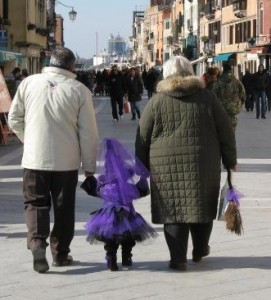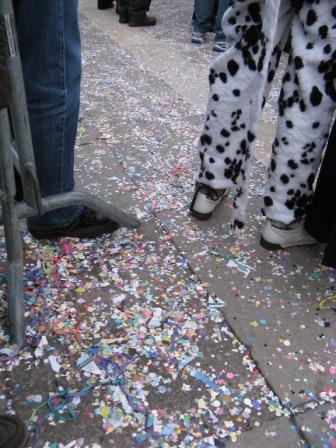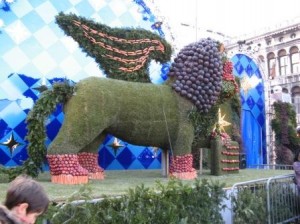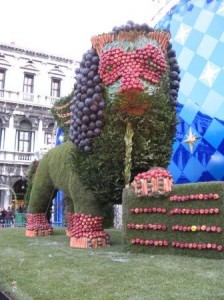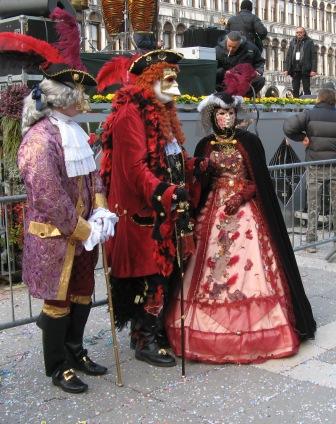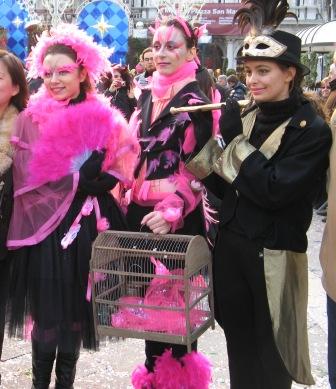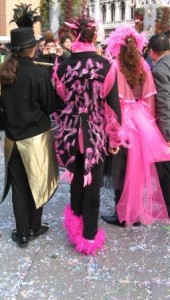Someone told me the other day that I should look at a blog called Venezia Nascosta (Hidden Venice),so I did. It’s as attractive as several others which are more or less on the same beam, but it appears to concentrate primarily on history. I’m as interested in Venetian history as the next person, perhaps even more than many (if I may say so), but not when it’s the same old history that turns up in so many books, over and over, like the turkey for weeks after Thanksgiving. And adding a title which is even more trite only makes it worse. “Hidden.” Oy.
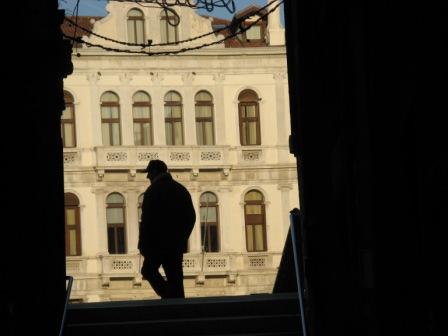
But what has driven me to mention it is because it’s yet another in an infinite series of examples of the insatiable need people seem to feel to refer to Venice as “hidden.” “Secret.” “Mysterious.” Despite scores of other worthy adjectives (I like “peerless,” though “incomparable” is also good), people can’t resist using these exhausted banalities to describe a city which evidently was built, not on a batch of marshy wetlands, but on quivering Jungian swamps of the unknowable. Maybe it’s Carnival, with everybody in disguise, that has doomed Venice to be labeled “mysterious.” Maybe it’s the fog. Maybe it’s the wonders of low tide.
I object to this tendency for several reasons. One, because it is a cliche, and cliches annoy me. The image of the city as an enigmatic, unfathomable, a faintly (or overtly) sinister place, an amniotic sort of realm ruled by inscrutable forces illuminated by a faint but lurid aura of romanticism, began to germinate in the 1600s, when visitors began to be interested in the city less as a political or commercial power and more as a place of intrigue, decadence, and general dissipation.
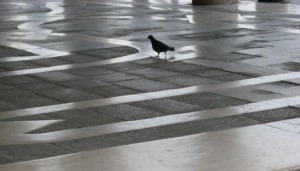
Mystery, in fact, is a quality that was promoted by the city itself, whose patrician families and government (which were the same thing) knew that secrets had real power. Discretion and dissimulation were serious weapons of self-defense in a world composed of much larger and more dangerous nations, all of which wanted to hurt, or, if they were having a very good day, to kill you at some point or another. This much we can certainly appreciate.
“The first who wrapped the city in mystery were the Venetian rulers,” Espedita Grandesso, a Venetian writer and historian, told me once. “Because the Serenissima was a little bijou in the midst of iron barrels. So this state of things made the nobles and merchants keep everything secret, even the most foolish thing. They weren’t completely mistaken. All they needed was the rumor of something going wrong, and all the governments of Europe would be breathing down her neck.”
“All the secrets of the crafts had to be protected, like the secret of making scarlet dye,” costume designer Stefano Nicolao added. The same paranoia applied to the techniques of glass-making, and many other trades, such as the formula for the best teriaca in Europe. (Teriaca was the all-purpose medicament of choice for centuries, but the recipe has been lost. Would that be a mystery?) There were obvious commercial reasons — survival reasons — for relying, not on a hearty handshake and a call for another round of drinks, but merely the shimmer of a sideways glance, a tiny shrug. Did that little frown mean yes or no?
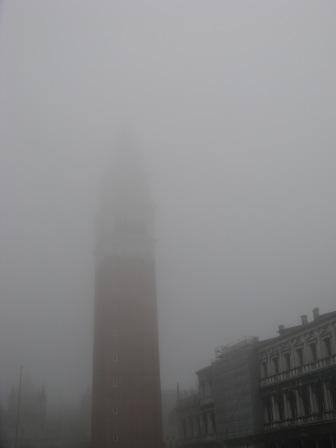
But by the Romantic era, the idea of Venice’s inscrutability had gotten completely out of hand. Once secrecy had become the way of life, aided by the custom of wearing masks up to half the year, it didn’t take long before the entire city came to be viewed as a fantastic decoction of intrigue, deception, and eventually — why not? — erotic adventure. But I still don’t see how all that adds up to “mysterious.”
Which leads me to my second objection to this cliche, which is that I don’t understand how a city which covers just three square miles, with only 59,000 inhabitants, and is visited by millions of people every year (though admittedly in very short bursts of time and attention), can possibly be presented as retaining even the tiniest shred of a secret.
Tokyo has 35,676,000 inhabitants and covers 5,200 square miles– you could make a very good case for there being a mass of secrets as big as the Sears Tower hidden in there somewhere. Probably a much better case than you could make for Venice.
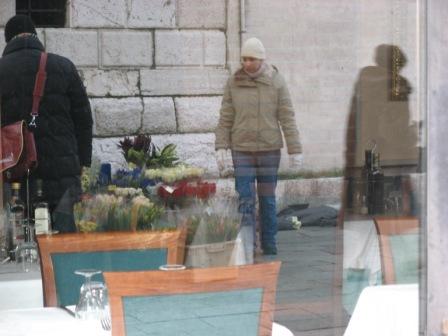
Maybe the force governing these Venetian so-called secrets is the city’s beauty. But why should beauty have anything to do with secrecy? I’d be willing to bet money that there are as many, or more, secrets in Lincoln, Nebraska, as there are in Venice. But nobody indulges in reveries about the secrets of Shreveport, or contemplates the mysteries of Walla Walla. Why?
And another thing. If there were to be secrets here, how have they managed to stay secret all this time? Amazon.com lists 11,696 books under the keyword “Venice.” Secrets? Where?
My opinion on the subject can best be expressed by Sherlock Holmes’s astute comment to Dr. Watson: “You see, but you do not observe.”
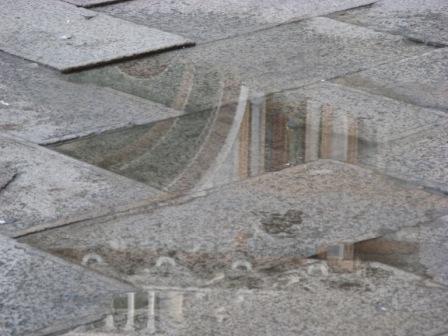
Why insist on seeking something ephemeral and perhaps even indefinable? If you really want to discover Venice, don’t go looking for secrets; look at exactly what there is. Anything you can see in broad daylight anywhere in the city is going to be as complex, as brilliant, as astonishing as any rumpsprung old “secret” foisted off on you by yet another Venicemonger.
Yes, of course the city has an eccentric glamor, an insinuating fascination that can indeed sneak up on you and trap you. Venice is beautiful; to say that is to have said little more than that the sun rises in the east and water runs downhill. It is unforgettable, fatal, addictive, whatever you want. People become infatuated with it, or the idea of it. I offer myself as a case in point. But that doesn’t make it mysterious.

So let me make a heartfelt, and I’m sure completely inaudible, plea for some new word to describe Venice that will take the place of any term that is synonymous with secrecy, concealment, enigma, or anything more subtle than a bowl of pasta and beans, or a couple of fried clams. Please. Just try.

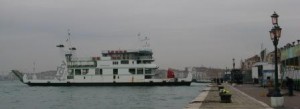
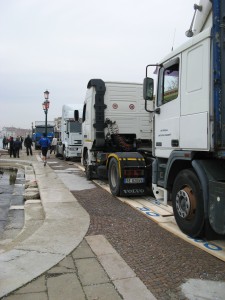
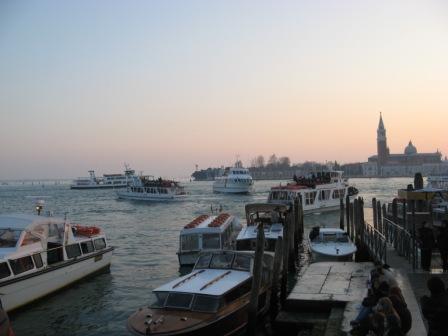
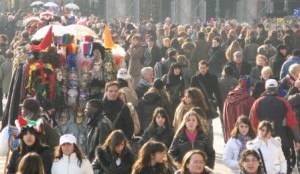 They estimate that each visitor spent 50 euros, for an exciting total income of 40 million euros. Not sure where this number came from; a professor of the Economics of Tourism at the University of Venice says that the “bite and run” day-trippers spend an average of 30 euros each day, while the more solid tourist spends 150. In any case, let’s not quibble over a million more or a million less. Restaurants and hotels certainly made money, not to mention the ACTV and their spectacularly expensive vaporetto tickets.
They estimate that each visitor spent 50 euros, for an exciting total income of 40 million euros. Not sure where this number came from; a professor of the Economics of Tourism at the University of Venice says that the “bite and run” day-trippers spend an average of 30 euros each day, while the more solid tourist spends 150. In any case, let’s not quibble over a million more or a million less. Restaurants and hotels certainly made money, not to mention the ACTV and their spectacularly expensive vaporetto tickets.